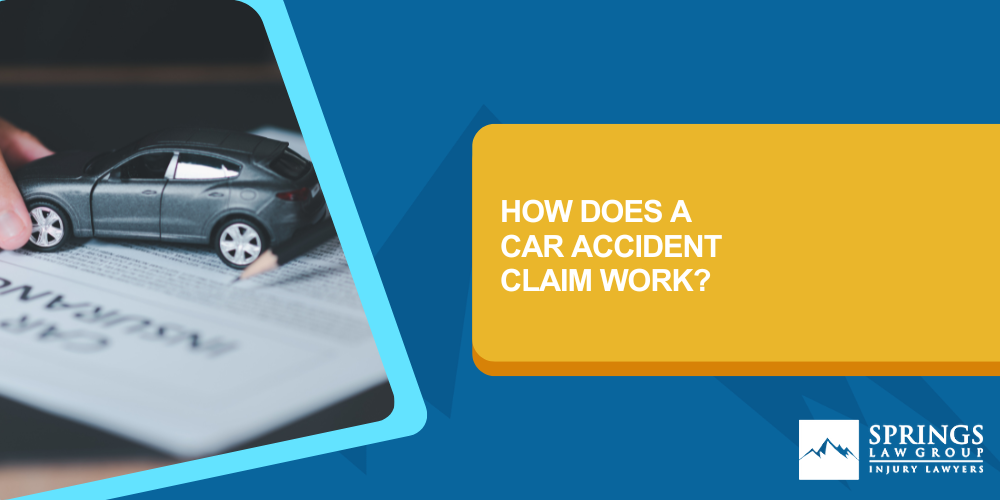How Does a Car Accident Claim Work?

Car accidents in Colorado Springs are quite common. As a result, many accident victims wonder how claims for damages or injuries from car accidents work.
First, it is important to understand how the type of damages or injuries are categorized: property damage, which is typically damage to your vehicle, is handled separately from “personal injuries” or “bodily injuries,” which are injuries to your body. In an auto accident where the vehicle is damaged and a person is injured, there will be two different payouts from the at-fault driver’s insurer, one under the property damage coverage and the other under the bodily injury coverage.
Property damage claims are usually simpler and faster to resolve than bodily injury claims. Damages to your vehicle are evaluated by the relevant auto repair specialist. If your vehicle is not a “total loss,” and there is available insurance coverage, the insurance company will pay for repairs.
On the other hand, the insurance company may declare your vehicle a “total loss,” which usually means that one or more of the following is true:
- The cost of the necessary repairs is more than the car is worth; or
- The vehicle cannot be repaired safely; or
- The amount of damage is severe enough that regulations require that the vehicle be declared a total loss.
In the event of a total loss—your vehicle is declared “totaled”—you will receive payment for the value of your vehicle. This value can be debated but is typically based on verifiable sources for vehicle market value. If you disagree with the insurance company’s valuation of your vehicle, be prepared to provide proof of its value beyond your own personal opinion; websites like kbb.com (Kelley Bluebook) and edmunds.com (Edmunds) would be helpful in providing persuasive proof of your car’s value at the time of the wreck.
In the meantime, if you received physical injuries in the accident, you should begin treatment for those injuries immediately and as recommended by your healthcare professionals. The treatment will often continue even after you have settled the property damage claim. In most circumstances, it is usually best to wait until your treatment is finished or you have reached “maximum medical improvement” (MMI) before settling your bodily injury claim. The reason it is usually best to wait is because, until you are done with treatment or have reached MMI, you do not know the extent of your injuries and whether or not you will need high dollar treatments like injections or surgery. Once you settle your bodily injury claim with the at-fault driver’s insurance company, you cannot go back later and demand more money if you discover a hidden injury or your injury turns out to be worse than you thought. For these reasons, it is best to wait until you are fully healed or you have reached MMI before settling. Keep in mind, however, that in Colorado, the statute of limitations is three years for auto accidents, so do not wait too long!
There are other aspects of an insurance claim process, such as communicating with the insurance company, dealing with liens and subrogation rights, and gathering records, which will be dealt with in later articles. Furthermore, each person’s claim and injuries are unique, so every claim process varies by person and accident. For that reason, if you have questions about the claims process, you can set a free consultation with an attorney from Springs Law Group to discuss the unique aspects of your case.
